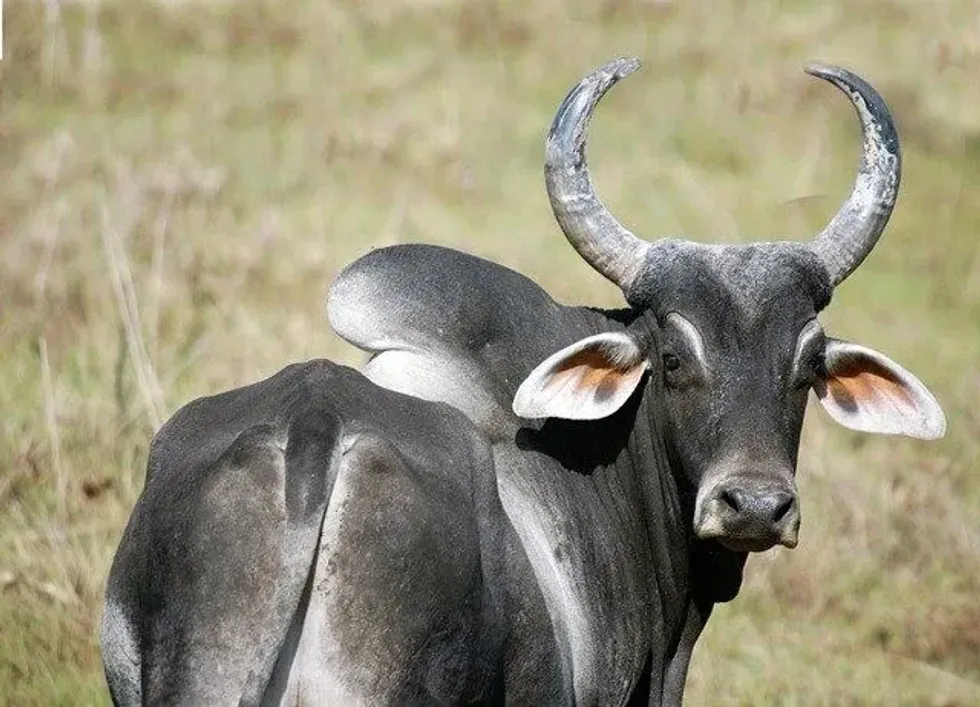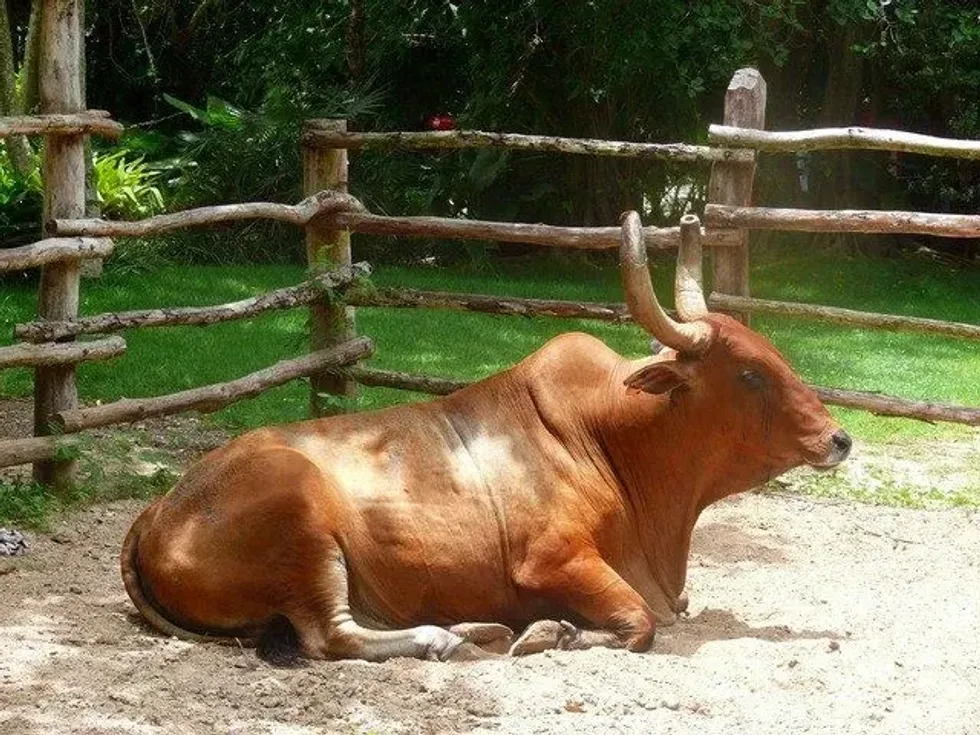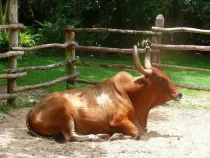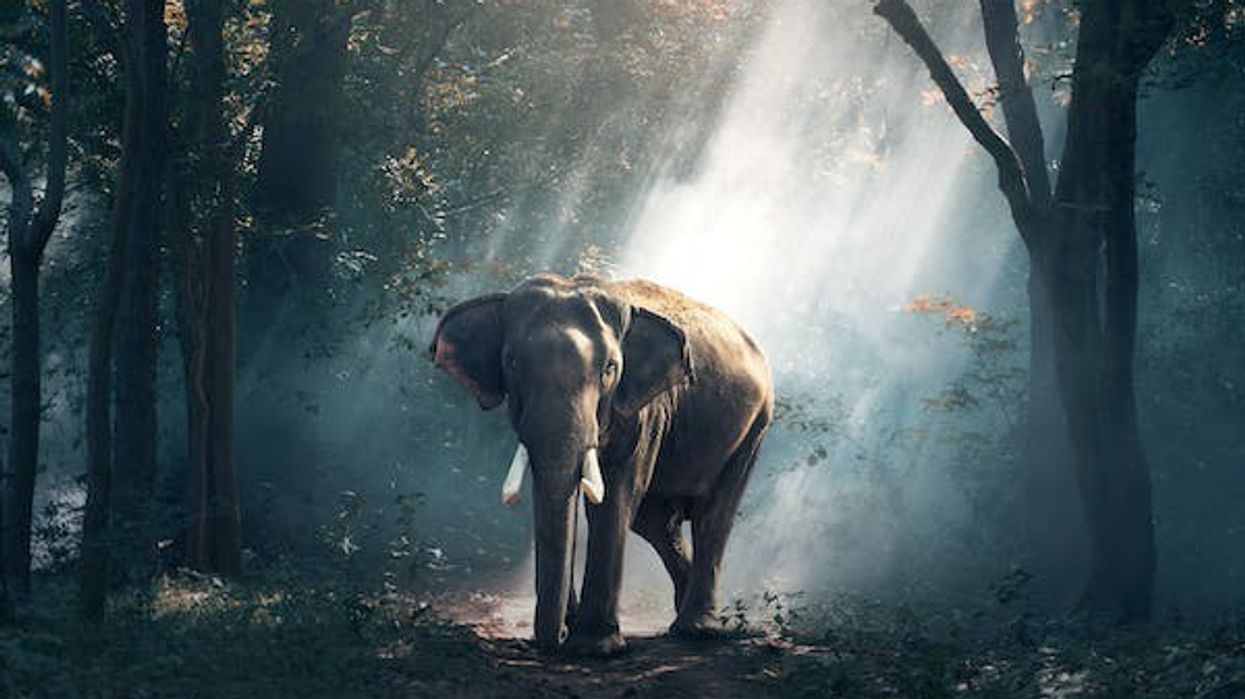Fun Zebu Facts For Kids

Cattle have always played an important role in the lives of living organisms.
And when it comes to the prowess of sturdy and hard working species the promise of results is intensified.
Zebu cattle or also commonly referred to as the indicine cattle or humped cattle with droopy ears, are a group of domesticated cattle that traces it origin to South Asia, particularly Indian terrains.
Zebu cattle is regarded as a sacred cow in Indian culture However due to their prominent efficiency these cattle quickly gained popularity and are now designed with numerous cross-breeding experiments to get the best of the best zebu breeds, with the most prominent one being the American Brahman cattle.
Although, zebu cow is regarded as poor source of milk and meat, it is still bred in the United States.
The zebu species is one of the oldest species of cattle known to the mankind and it is believed to be around for over 6000 years. This breed is reared in various regions for its milk and meat.
Read along to discover some interesting facts about the zebu cattle characteristics. After, do check out our other articles on plains zebra and Masai giraffe.
Zebu Interesting Facts
What type of animal is a zebu?
Zebu or Bos taurus indicus (Genus: Bos) are a group of domesticated cattle that are categorized by their anatomy, such as by the hump on their shoulders.
This species of domesticated cattle is useful to humankind in a number of ways such as dairy cattle, riding animals, beef cattle, in agriculture for ploughing, as well as in providing products like dung (or fuel and fertilizer) and hides.
It is one of the oldest cattle breeds known to humans.
What class of animal does a zebu belong to?
Zebu cattle belongs to class Mammalia; that is a group of creatures that are categorised by the presence of mammary glands, by which they nourish their offspring. Beside this, Mammalians have the ability to directly give birth to their young one.
How many zebus are there in the world?
Though no exact figures are allotted to the total number of zebu cattle across the world , their population is estimated to be over 200 million. Since a number of valuable and useful species result from crossover with zebu cattle breeds, their population can safely be said to be steady in numbers.
Where does a zebu live?
The Ancestors of Bos taurus indicus are found to be domesticated natives of Southern Asia. The cattle zebu is known to be popularly distributed across Indian Soils.
Later these organisms were located along the geographical terrains of North and South America, Africa, parts of Europe and the Middle East. A number of species were designed by crossbreeding zebu with several local breeds.
What is a zebu's habitat?
The habitat of these animals ranges from tropical suburbs to terrestrial biomes such as open grasslands, scrub forest, plains. The habitat of zebu is particularly influenced by the availability of food. These organisms can also be located at agricultural sites.
Who do zebus live with?
Zebu constitute a family of social cattles. These animals tend to exist in herds. Despite their size and structure, they are categorised under domestic cattle; that is they are trained to work on command and can be controlled with the right assistance.
In their existing herds these animals form strong bonds, protecting their own kinds and the young ones. The male members of the species are known to clash only for the task of establishing dominance (particularly for mating). However under threatening circumstances, they may become defensive and attack.
How long does a zebu live?
The average lifespan of life expectancy of Bos taurus indicus is about 20 years. This species is found in India, Africa, and Brazil as a work animal.
How do they reproduce?
Zebu is a herd animal; that is, these groups of animals flock together in groups. The mating procedure in these cattle is polygynous (one male breed with numerous females).
The reproductive cycle in zebus is a year-round process, however, their disposition is particularly high during the spring season.
The reproductive cycles in these organisms begin with the establishment of dominance by the male member of the respective herds. This bull after proving its leadership earns the exclusive rights to mate with the females of the group.
During mating, the bull penetrates the female from the rear for insemination.
Following fertilization and after an approximate gestation of about nine months, the female gives rise to a single calf. The young infant is highly dependent on its mother, despite attaining the ability to stand and walk, the cow, for a period of about six months, nurses its offspring while other members of the herd protect and train the calf.
What is their conservation status?
With more than 200 million zebus distributed widely across the geographical regions of earth, these organisms in terms of Conservation Status are categorized under least concerned species. Therefore it can be safe to say that the zebu family are facing no major threat to their population.
Zebu Fun Facts
What do zebus look like?
Characterized by sturdy anatomy, Bos taurus indicus or zebu fall under the category of domestic cattle. Particularly designed for heavy labor, the weight of cattle belonging to zebu breed is quite high; the maximum weight reaching as much as 3,500 lb with a length of about 84 in.
The body of these muscular animals is covered with short hair, which facilitates the adaptation to warm weather.
Prominently recognized by a large hump, huge horns, and drooping ears, zebu are found in a number of shades varying from gray (with a tinge of black here and there) to vivid tones of brown, reddish-brown, white and red.
The phenotypic traits of these domestic cattle includes drooping ears, a pair of hollow horns, and loose skin also called dewlaps.
This loose skin of the zebus if interesting to look at.
The dentition of these cattle show the presence of a thick layer in the buccal cavity called dental pads. They lack upper incisors and their jaw is adapted to process circular grinding motion, facilitating the task of crushing coarse vegetation.

How cute are they?
With massive built and Brawny appearance, the Bos taurus indicus species might now behold a cute profile but these animals definitely project a robust and laborious personage.
How do they communicate?
Particularly designed for labor the organisms under zebu breed are quite responsive. These cattle use an array of senses (such as touch, cellular receptions, visual cues, sound) and chemical receptors in their body to communicate, perceive and adjust in the given environment.
How big is a zebu?
The zebu bull is a family of massive animals, the average range observed in the length of these cattle varies from about 84 in (as found in Sibi Bhagnari, one of the largest breeds) to 35-42 in (as found in miniature zebu.)
How fast can a zebu run?
Zebu are not particularly an athletic group of animal species (their immense weight and built prove to be a major deterring factor) However under adverse circumstances, such as any immediate threat, Bos taurus indicus are known to run with a speed of about 25 mph.
How much does a zebu weigh?
The average weight of zebu ranges between 947-2500 lb . One of the largest breeds of zebu that is, Sibi bhagnari, weighs as much as 2,400-3,500 lb. While miniature zebu, the smallest member of their family, is about 299-599 lb.
What are their male and female names of the species?
The males are commonly referred to as bulls, however they may also be referred to as male zebu or male Bos taurus indicus. While the females of these species are called heifers (before breeding) and following the birth of its first infant, the females are referred to as cows.
What would you call a baby zebu?
The young one of zebu breed are commonly known as a calf, however they may also be referred to as infants or juvenile.
What do they eat?
Zebu or Bos taurus indicus are herbivorous. Zebu are also categorized as ruminant animals, because of their ability to dissolve and digest cellulose.
This breed feeds on food like grasses, roots, clovers, tubers, stems, flowers, other plant parts and products. To support its hefty build these organisms hold the capacity to intake a maximum of around 150 pounds of food a day (which varies according to their body- mass).
Grazing their fodder for as long as eight hours, they utilize the remaining time resting and chewing cud.
Are they aggressive?
Though not outright aggressive and hostile, these groups of domestic cattle can be belligerent under circumstances involving claiming and retaining territory, as well as during breeding procedures.
It is astute to avoid complicated situations with these giant guys, particularly in the light of their massive size and well-endowed horns (especially if you are not a professional farmer or herder and thus are not practiced enough to handle these animals).
Would they make a good pet?
Zebu are highly beneficial to mankind. They provide a number of benefits. Additionally a number of members of this family, For instance, the American Brahman cattle is known to make great companion animals.
Did you know...
Dating back to as long as 8000 years ago, zebu’s first evolved from the aurochs species (now extinct), the cattle of the wilderness.
Zebu was first instilled in the soils of United States in the 19th century. Charbray and Brangus were amongst the breeds that were introduced by crossbreeding the zebu species in the terrains of America.
Bos taurus indicus species are known to be highly resistant to disease causing microorganisms such as viruses. This ability adds to the huge popularity of these cattle as domestic animals.
Presently as many as 70 different breeds of this species are recognized and recorded.
The appearance is distinguished by a large hump on the back and loose skin hanging around the neck.
How are zebu adapted to hot climates?
The Bos taurus indicus species are genetically adapted to the confer thermotolerance and this is due to a number of reasons.
Due to low metabolism, the cellular heat produced in the body of cattle belonging to the zebu breed is low (which is in variation to that of European cattle).
Unlike the European cattle family, the genetic combination of zebu equip their cells and tissue to hold low resistance to heat flow. Therefore the heat transfers from the basal body to the skin is low in comparison to heat loss from the body to the outside, all thanks to larger sweat glands in Bos taurus indicus.
The short hair coat of zebu species provides a beneficial channel. It facilitates the conductive as well as convective heat loss. Additionally the absorption of the scorching solar radiations are reduced.
What are zebu cows used for in India?
India is a land of many beliefs. Though the history of ancient India holds numerous accounts of cattle sacrifice, a number of animals do serve as a source of food, however there is evidence in reverent and sacred texts such as Rig Veda, where milk is synonymous to being indomitable and indestructible.
Therefore the milk producing cows are sacred living organisms. The slaughter of cows and their varying species are prohibited in India, owing to their sacred foundations.
Therefore, zebu, falling under this same category, are used in India for milk, its products and as draft animals, pulling heavy loads or for plowing the soil. The dung of these animals is a good source of fertilizer and fuel.
Here at Kidadl, we have carefully created lots of interesting family-friendly animal facts for everyone to discover! Learn more about some other mammals including addax, or alpine ibex.
You can even occupy yourself at home by drawing one on our zebu coloring pages.
We Want Your Photos!
More for You
See All
Doctorate specializing in Veterinary Medicine

Oluniyi AkandeDoctorate specializing in Veterinary Medicine
With an accomplished background as a Veterinarian, SEO content writer, and public speaker, Oluniyi brings a wealth of skills and experience to his work. Holding a Doctor of Veterinary Medicine degree from the University of Ibadan, he provides exceptional consulting services to pet owners, animal farms, and agricultural establishments. Oluniyi's impressive writing career spans over five years, during which he has produced over 5000 high-quality short- and long-form pieces of content. His versatility shines through as he tackles a diverse array of topics, including pets, real estate, sports, games, technology, landscaping, healthcare, cosmetics, personal loans, debt management, construction, and agriculture.
Bachelor of Arts specializing in Political Science and Sociology

Spandana KantamBachelor of Arts specializing in Political Science and Sociology
Spandana holds a Bachelor's degree in Political Science from Acharya Nagarjuna University. She has a passion for writing and enjoys reading crime and thriller novels while listening to RnB music in her free time.
Disclaimer
1) Kidadl is independent and to make our service free to you the reader we are supported by advertising. We hope you love our recommendations for products and services! What we suggest is selected independently by the Kidadl team. If you purchase using the Buy Now button we may earn a small commission. This does not influence our choices. Prices are correct and items are available at the time the article was published but we cannot guarantee that on the time of reading. Please note that Kidadl is a participant in the Amazon Services LLC Associates Program, an affiliate advertising program designed to provide a means for sites to earn advertising fees by advertising and linking to Amazon. We also link to other websites, but are not responsible for their content.
2) At Kidadl, we strive to recommend the very best activities and events. We will always aim to give you accurate information at the date of publication - however, information does change, so it’s important you do your own research, double-check and make the decision that is right for your family. We recognise that not all activities and ideas are appropriate for all children and families or in all circumstances. Our recommended activities are based on age but these are a guide. We recommend that these ideas are used as inspiration, that ideas are undertaken with appropriate adult supervision, and that each adult uses their own discretion and knowledge of their children to consider the safety and suitability. Kidadl cannot accept liability for the execution of these ideas, and parental supervision is advised at all times, as safety is paramount. Anyone using the information provided by Kidadl does so at their own risk and we can not accept liability if things go wrong.
3) Because we are an educational resource, we have quotes and facts about a range of historical and modern figures. We do not endorse the actions of or rhetoric of all the people included in these collections, but we think they are important for growing minds to learn about under the guidance of parents or guardians.







